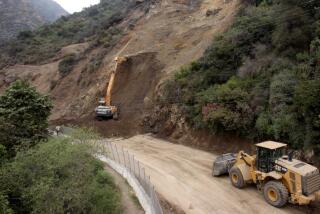Tollway Finances in No Danger
- Share via
The June 24 article reporting your comparison between traffic projections and actual traffic experience on the 8-mile open segment of the Foothill Transportation Corridor has created the mistaken impression that demand and use of the new toll highway is significantly below expectations. The article further suggests fictitious scenarios in which a traffic shortfall might lead to financial problems for the Transportation Corridors Agency.
In June 1995, our firm, J.P. Morgan Securities Inc., acted as senior manager in the sale of the agency’s bonds, which financed the construction of the remaining 30 miles of the Foothill/Eastern Transportation Corridor. The traffic projections to which your article compares actual traffic counts were prepared to support the sale of those 1995 bonds. Therefore, we feel some responsibility to make several points clear:
The difference between the projections and actual traffic counts since the first segment of the Foothill Corridor opened is roughly 6%. Such a minor deviation is well within the acceptable range for such projections. The bonds are structured to comfortably withstand such a minor shortfall--even if it were to be sustained on a permanent basis.
Meaningful comparisons between projections and actual traffic counts must wait until the full, interconnected corridor opens to revenue traffic in 1999.
Neither bondholders nor the agency are relying on revenue from this early-opening segment for payment of bond debt service. Indeed, funds required for interest payments on the bonds through the construction period are already in a reserve account.
Notwithstanding the modest difference between early projections and early traffic counts, the corridor represents a sound investment--both for the citizens of Orange County and for the sophisticated financial institutions that purchased the agency’s bonds.
MICHAEL PATRICK GEORGE
Managing Director
J.P. Morgan Securities Inc.
San Francisco
More to Read
Sign up for Essential California
The most important California stories and recommendations in your inbox every morning.
You may occasionally receive promotional content from the Los Angeles Times.













